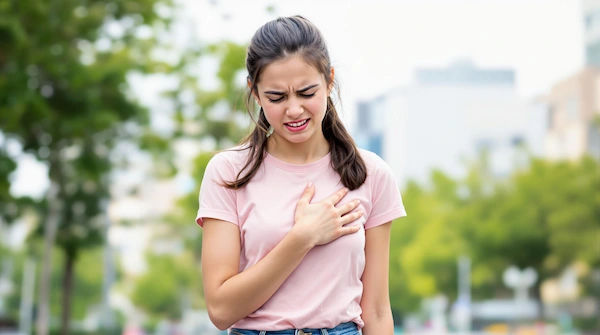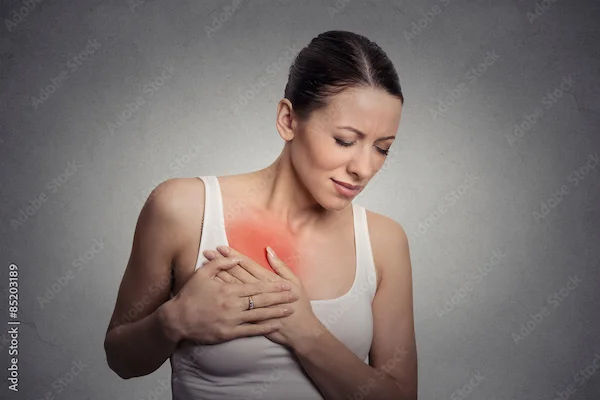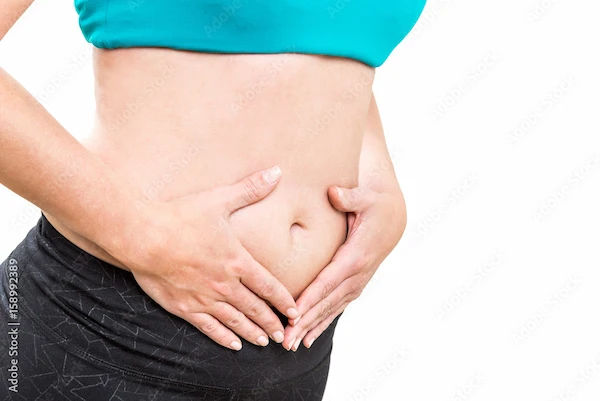Difference Between Regular Breast Pain And Breast Cancer Pain
Understand how regular breast pain differs from breast cancer pain. Learn about their causes, symptoms, and warning signs to know when breast pain may indicate a more serious underlying condition.

Written by Dr. Siri Nallapu
Reviewed by Dr. Shaik Abdul Kalam MD (Physician)
Last updated on 25th Oct, 2025
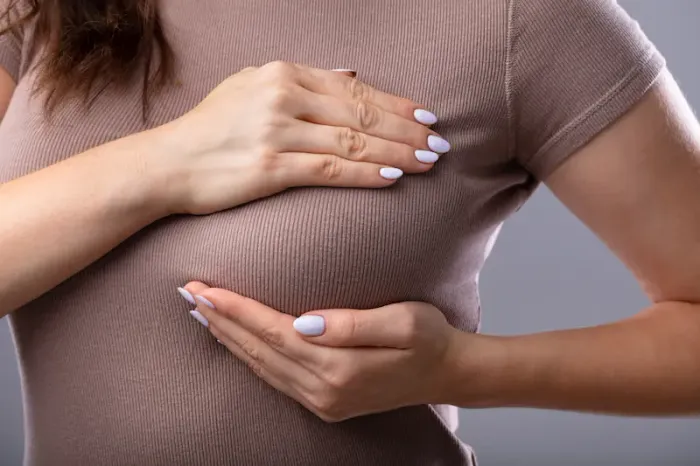
Introduction
Breast pain can be alarming—especially when “cancer” is the first thought that pops into your mind. The good news: most breast pain is not caused by cancer. In fact, regular breast pain (also called mastalgia) is very common, often linked to hormones, bra fit, or even chest wall strain. This guide explains the key differences between regular breast pain and breast cancer pain in plain language—so you know when to watch, when to self-manage, and when to get checked. We’ll cover symptoms, timing, patterns, red flags, and what to expect if you see a doctor. You’ll also find simple self-checks, practical tips, and when to use imaging. If symptoms persist beyond two weeks or come with warning signs, consult a doctor online with Apollo 24|7 for further evaluation. With facts from trusted sources and a calm, step-by-step approach, you’ll be able to assess your pain with more confidence and less worry. Sources include the American Cancer Society, Mayo Clinic, NHS, Breastcancer.org, Cleveland Clinic, and the National Cancer Institute.
Consult Top Specialists
Breast Pain 101: Why It Happens
Regular breast pain (mastalgia) is very common. Up to two-thirds of people with breasts report it at some point, and many experience it around their menstrual cycle. Three broad categories help make sense of it:
• Cyclical mastalgia: pain that rises and falls with your hormones, typically in the week or two before a period and easing after menstruation. It’s often dull, heavy, aching, or tender and affects both breasts (especially the outer upper areas).
• Noncyclical mastalgia: pain unrelated to periods. It can be sharp, burning, or stabbing, and may be focal (one spot) or more widespread. Common causes include benign cysts, medication side effects (e.g., some antidepressants or hormone therapy), trauma, or large breasts causing strain.
• Extramammary (not from the breast tissue): chest wall pain (like costochondritis), neck/shoulder strain, or nerve pain can be felt “in the breast.” This pain often worsens with movement or pressing on a rib space and may be relieved by posture changes.
Key insight: The breast is rich in nerves and sensitive to fluid shifts and mechanical strain. That’s why small changes—like a slightly ill-fitting bra or a new upper-body workout—can create outsized discomfort. Keeping a brief pain diary (time, location, intensity, cycle day, activities) often clarifies patterns and triggers.
Try this at home:
• The press test: Gently press along the rib spaces beneath the breast. If the pain is reproduced by pressure on the ribs (not on the breast tissue), chest wall pain is likely.
• Bra fit check: If pain improves significantly with a well-fitted sports bra for a week, mechanical support was part of the issue.
Is Breast Pain a Sign of Cancer?
Most breast pain is not cancer. Authoritative sources state that pain alone is rarely the first or only sign of breast cancer. The American Cancer Society notes that breast pain is not a common symptom of breast cancer; when cancer causes pain, it often comes alongside other changes such as a lump or skin/nipple changes.
What does the research suggest?
• Pain is common; cancer is uncommon as the cause of isolated breast pain.
• Persistent, localized (one-spot) pain without a lump is still usually benign, but focal, unremitting pain—especially if new and not linked to the cycle—warrants evaluation.
• Inflammatory breast cancer (IBC), a rare but aggressive type, can present with pain, warmth, and swelling across the breast—distinct from typical cyclical pain.
A practical frame for the general public:
• If your pain is cyclical, affects both breasts, and comes and goes predictably, it’s usually regular breast pain.
• If your pain is persistent in one spot for more than two weeks, or comes with a lump, skin changes, nipple discharge (especially bloody), or swelling/heat, get it checked. When in doubt, it’s better to be evaluated than to worry.
Unique insight: Anxiety can amplify pain perception. Knowing that pain alone is rarely cancer can reduce stress, which in turn can reduce the intensity of pain—an example of the mind–body connection contributing to relief.
What Regular (Non-Cancer) Breast Pain Feels Like?
Here’s what regular breast pain feels like:
1. Cyclical pain:
• Pattern: Starts 1–2 weeks before your period, eases once bleeding begins.
• Sensation: Heaviness, tenderness, fullness; sometimes burning or sharp twinges.
• Distribution: Often both breasts, outer upper areas; may radiate to the armpit.
• Triggers: Hormonal fluctuations, fluid retention, caffeine for some, stress, and lack of supportive bras.
2. Noncyclical pain
• Pattern: Not tied to the cycle; can be intermittent or constant.
• Sensation: Sharp, burning, stabbing, or a deep ache; sometimes in a single spot (“sharp pain in breast one spot”).
• Common causes: Benign cysts, trauma/strain, large breasts causing ligament stretch, costochondritis, shingles (if rash appears), medication effects (some SSRIs, heart medications, and hormone therapy can increase sensitivity).
• Menopause and HRT: Fluctuating or added hormones can cause mastalgia; during perimenopause, irregular cycles may make pain patterns unpredictable.
3. Breast pain but no lump
This is very common and—especially when cyclical—usually benign. It can still be distressing. A support plan might include:
• A trial of a supportive sports bra day and night for 1–2 weeks.
• Gentle upper-back and chest stretches to reduce chest wall contribution.
• A 2–3 week caffeine reduction trial to see if symptoms improve.
What Breast Cancer Pain Can Feel Like?
While cancer pain is not typical, certain patterns should prompt attention:
• Persistent focal pain in one area that doesn’t vary with your cycle.
• Pain accompanied by a new lump or area of thickening that feels different from surrounding tissue.
• Pain with skin changes: dimpling, puckering, redness, scaling, or “peau d’orange” (orange peel texture).
• Nipple changes: retraction (pulling inward), crusting, scaling, or spontaneous discharge, especially bloody.
Special types, special clues:
• Inflammatory breast cancer (IBC): Can cause diffuse pain, swelling, redness over a third or more of the breast, warmth, and rapid change. It may not cause a distinct lump and can be mistaken for an infection. This needs urgent evaluation.
• Paget disease of the breast (rare): Usually affects the nipple/areola with itching, burning, scaling, and possibly discharge; may or may not be painful.
If persistent focal pain or worrisome changes last beyond two weeks, consult a doctor online with Apollo 24|7 or book an in-person visit for further evaluation and imaging as needed.
Red Flags: When to See a Doctor Promptly
Contact a clinician soon if you notice any of the following alongside pain:
• A new lump or a firm area that feels different from the rest of the breast.
• Skin changes: dimpling, puckering, redness, scaling, or an orange peel appearance.
• Nipple changes: inversion (new), crusting, ulcers, or spontaneous discharge (especially bloody).
• Persistent focal pain (one spot) that doesn’t improve over two menstrual cycles or two weeks if you don’t menstruate.
• Swelling, warmth, rapid onset of redness (possible infection or inflammatory cancer).
• Swollen lymph nodes in the armpit or above the collarbone.
If you have fever and severe tenderness with redness, it may be infection (mastitis)—seek medical care promptly.
If symptoms persist beyond two weeks, consult a doctor online with Apollo 24|7 for further evaluation. If your clinician recommends lab tests (for example, thyroid function in the context of nipple discharge or broader endocrine symptoms), Apollo 24|7 offers convenient home collection for tests like TSH or vitamin D.
Self-Check Steps You Can Do at Home
Here’s how you can do self-check at home:
• Keep a pain diary: Note timing (cycle day), location (draw a simple map), intensity (0–10), triggers (exercise, caffeine, stress), and relief measures. This helps distinguish cyclical vs noncyclical patterns—key to figuring out if it’s regular breast pain before period vs cancer-related concerns.
• Try the press test: Press along rib spaces and chest wall around the breast. If pressure reproduces pain, chest wall pain is likely.
• Support trial: Wear a well-fitted sports bra day and night for 7–14 days. Many people feel substantial relief.
• Heat or cold: Warm compresses for cyclic tenderness; cold packs for sharp focal pain.
• Topical NSAIDs: A small amount of diclofenac gel over the painful area up to four times daily can help with localised pain; avoid broken skin and follow label guidance.
Lifestyle tweaks:
• Reduce caffeine for 2–3 weeks; some report improvement.
• Smoking cessation improves tissue healing and may reduce pain perception.
• Gentle chest and upper-back stretches, plus posture breaks if you sit long hours.
Consult Top Specialists
How Doctors Figure It Out: Evaluation and Imaging
What to expect at your visit:
• History: Your clinician will ask about timing (cyclical vs continuous), exact location, severity, triggers, medications, pregnancy/menopause status, and any associated changes (lump, skin, nipple discharge).
• Physical exam: Both breasts, armpits, and the chest wall will be examined, checking for focal tenderness, lumps, skin changes, and lymph nodes.
Imaging strategy depends on age and features:
• Under 30: Ultrasound is often the first test for focal findings because young breast tissue is denser.
• 30–39: Ultrasound first; mammogram if indicated.
• 40 and older: Diagnostic mammogram plus targeted ultrasound for focal pain or palpable abnormalities.
• If nipple discharge is present, the type (bloody, clear, milky), whether it’s spontaneous, and whether it’s from one duct or multiple ducts will guide next steps.
Lab tests are not routine for breast pain but may be used if broader endocrine issues are suspected (for example, thyroid problems with galactorrhea). If your clinician recommends tests, Apollo 24|7 offers home collection for common labs like TSH or prolactin.
Effective Treatments for Regular Breast Pain
Most regular breast pain improves with simple measures:
• Supportive bras: A professionally fitted bra or a high-support sports bra can reduce motion and strain—especially during exercise.
• Topical NSAIDs: Diclofenac gel applied to the tender area is often effective for localized pain and has fewer systemic side effects than oral medications.
• Oral pain relief: Short courses of ibuprofen or acetaminophen can help. Always follow dosage guidance and check for interactions or contraindications.
For persistent or severe mastalgia (after conservative steps fail):
1. Medications:
• Tamoxifen (low dose) can reduce severe cyclical mastalgia but has potential side effects (hot flashes, thromboembolism risk). It’s reserved for significant, prolonged pain under specialist guidance.
• Danazol can help but often causes androgenic side effects (weight gain, acne, voice changes) and is used sparingly.
• Goserelin or other hormonal agents are rarely used due to side effects.
2. Supplements:
• Evening primrose oil and vitamin E have mixed evidence; some people report benefit with few side effects, but results are inconsistent. Try a time-limited trial and reassess.
3. Address contributors:
• Adjust medications if a known side effect is breast pain (discuss with your prescriber).
• Weight management and targeted physical therapy may help if large breasts or posture contribute.
If your condition does not improve after trying these methods, book a physical visit to a doctor with Apollo 24|7 to tailor treatment and consider imaging or prescriptions.
Managing the Worry: Anxiety and Breast Pain
Worry often magnifies the sensation of pain, creating a loop: more worry → more tension → more pain. Practical steps:
• Cognitive reframing: Remind yourself that pain alone is rarely due to cancer, especially if it’s cyclical and bilateral.
• Time-bound plan: Give conservative measures two weeks (or two cycles if pain is cyclical). Put a date on your calendar to reassess. Having a plan can lower anxiety.
Mind–body aids: Guided breathing, short walks, and sleep hygiene reduce overall pain perception.
• Support: Share concerns with a trusted clinician or support community. Breast pain is common—you’re not alone.
Special Situations: Pregnancy, Menopause, Men, and Transgender Individuals
• Pregnancy and lactation: Hormonal surges and milk production make tenderness common. Plugged ducts or mastitis cause focal pain, redness, and sometimes fever—seek care promptly for infection.
• Perimenopause and menopause: Fluctuating hormones can cause erratic pain. Hormone therapy (HRT) can increase breast tenderness; adjusting dose or formulation may help.
• Men: Men can have gynecomastia (breast tissue growth) with tenderness due to hormones, medications, or liver/thyroid conditions. A persistent lump or nipple discharge in men warrants evaluation.
• Transgender and gender-diverse people: Gender-affirming hormone therapy and chest surgeries influence breast/chest pain patterns. Share your treatment history with your clinician so evaluation aligns with your anatomy and care goals.
Preventing Future Flares
• Bra and biomechanics: Ensure proper support for daily activities and exercise. Consider a sports bra for high-impact workouts.
• Gradual training: Ease into new upper-body routines to avoid chest wall strain.
• Posture breaks: Stretch pectoral muscles and strengthen upper back to reduce referred pain.
• Track triggers: If caffeine or certain medications worsen pain, discuss options with your clinician.
• Maintain routine screening: Age-appropriate mammograms and clinical breast exams keep you on track regardless of pain status.
Myths vs Facts About Breast Pain and Cancer
• Myth: Any breast pain means cancer.
Fact: Pain alone is rarely a sign of cancer, especially if it’s cyclical and in both breasts.
• Myth: Only a lump matters; pain is always harmless.
Fact: While most pain is benign, persistent focal pain or pain with red flags needs evaluation.
• Myth: Caffeine always causes breast pain.
Fact: Some people improve with caffeine reduction; others notice no change. Try a time-limited trial and track results.
• Myth: If imaging is normal, pain is “in your head.”
Fact: Pain is real. Chest wall strain, hormonal shifts, and nerve sensitivity are valid causes. Treatment focuses on comfort and function.
What to Expect at Your Appointment?
Your clinician may ask:
• When did the pain start? Is it linked to your cycle?
• Is it in one spot or both breasts? Does pressing on the rib cage reproduce pain?
• Any new lump, skin change, or nipple discharge?
• Any new medications, supplements, or changes in hormone therapy?
• Pregnancy, breastfeeding, or menopause status?
Questions you might ask:
• Do I need imaging, and if so, which kind and why?
• If imaging is normal, what’s our plan to reduce pain?
• Could any of my medications be contributing?
• When should I follow up or seek reassessment if symptoms change?
Consult Top Specialists
Conclusion
Breast pain is common, and most of the time it’s not cancer. The key is to pay attention to patterns: cyclical versus constant, one spot versus both breasts, and whether any red flags show up. A short pain diary, a bra support trial, and simple home measures can make a big difference—while also helping you and your clinician decide on next steps. When pain is persistent, focal, or comes with a lump, skin changes, or nipple discharge, it’s time to get checked. A thoughtful evaluation—tailored to your age and symptoms—often provides both answers and relief. Remember: reassurance is a valid and therapeutic outcome when imaging and exam are normal. If you’re still unsure or your symptoms haven’t improved after two weeks, consult a doctor online with Apollo 24|7 or book an in-person visit for further evaluation. With the right information and a stepwise plan, you can address breast pain calmly and confidently.
Consult Top Specialists

Dr. Karuna Ratwani
Obstetrician and Gynaecologist
11 Years • MBBS, MS( Obstetrics & Gynaecology), F.MAS, FICRS Advanced Diploma in Minimal Access surgery Fellow of International College of Robotic Surgeons Diploma in Reproductive Medicine, Kiel-Germany Masters in Cosmetic Gynaecology , Greifswald-Germany Masterclass in Obstetrics & Gynaecology Ultrasound ( ISUOG, UK)
Delhi
Apollo Hospitals Indraprastha, Delhi

Dr Abdul Basith
Infertility Specialist
15 Years • MBBS & MD (OG) & MRCOG in UK & PD-FRM
Chennai
Apollo Women Hospitals Thousand Lights, Chennai
(25+ Patients)

Dr. Nilanjana Das
Obstetrician and Gynaecologist
5 Years • MS (O&G)
Guwahati
Apollo Personalized Health Check Centre, Guwahati
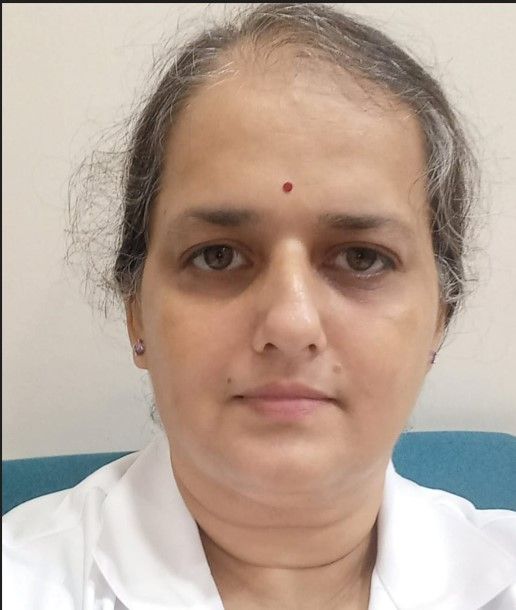
Dr. Asawari Kesari Kapoor
Obstetrician and Gynaecologist
23 Years • M.B.B.S, D.G.O(Mumbai) ,D.G.O (C.P.S), D.N.B (OBGY)
Delhi
Apollo Hospitals Indraprastha, Delhi
(25+ Patients)
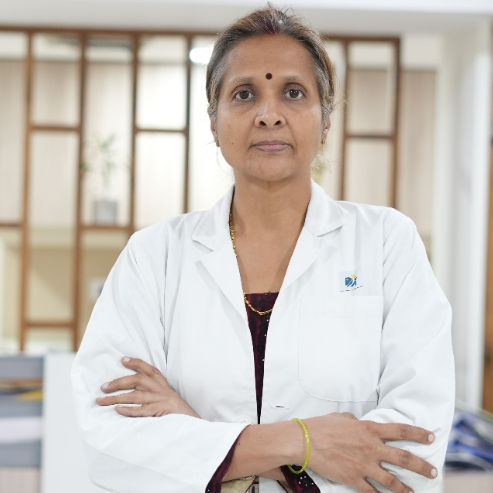
Dr Bhawna Garg
Gynaecological Oncologist
26 Years • MBBS, MS, (PGI MS ROHTAK) FELLOWSHIP GYNECOLOGY ONCOLOGY, (CANCER INSTITUTE CHENNAI)
Delhi
Apollo Hospitals Indraprastha, Delhi
Consult Top Specialists

Dr. Karuna Ratwani
Obstetrician and Gynaecologist
11 Years • MBBS, MS( Obstetrics & Gynaecology), F.MAS, FICRS Advanced Diploma in Minimal Access surgery Fellow of International College of Robotic Surgeons Diploma in Reproductive Medicine, Kiel-Germany Masters in Cosmetic Gynaecology , Greifswald-Germany Masterclass in Obstetrics & Gynaecology Ultrasound ( ISUOG, UK)
Delhi
Apollo Hospitals Indraprastha, Delhi

Dr Abdul Basith
Infertility Specialist
15 Years • MBBS & MD (OG) & MRCOG in UK & PD-FRM
Chennai
Apollo Women Hospitals Thousand Lights, Chennai
(25+ Patients)

Dr. Nilanjana Das
Obstetrician and Gynaecologist
5 Years • MS (O&G)
Guwahati
Apollo Personalized Health Check Centre, Guwahati

Dr. Asawari Kesari Kapoor
Obstetrician and Gynaecologist
23 Years • M.B.B.S, D.G.O(Mumbai) ,D.G.O (C.P.S), D.N.B (OBGY)
Delhi
Apollo Hospitals Indraprastha, Delhi
(25+ Patients)

Dr Bhawna Garg
Gynaecological Oncologist
26 Years • MBBS, MS, (PGI MS ROHTAK) FELLOWSHIP GYNECOLOGY ONCOLOGY, (CANCER INSTITUTE CHENNAI)
Delhi
Apollo Hospitals Indraprastha, Delhi
Consult Top Specialists

Dr. Karuna Ratwani
Obstetrician and Gynaecologist
11 Years • MBBS, MS( Obstetrics & Gynaecology), F.MAS, FICRS Advanced Diploma in Minimal Access surgery Fellow of International College of Robotic Surgeons Diploma in Reproductive Medicine, Kiel-Germany Masters in Cosmetic Gynaecology , Greifswald-Germany Masterclass in Obstetrics & Gynaecology Ultrasound ( ISUOG, UK)
Delhi
Apollo Hospitals Indraprastha, Delhi

Dr Abdul Basith
Infertility Specialist
15 Years • MBBS & MD (OG) & MRCOG in UK & PD-FRM
Chennai
Apollo Women Hospitals Thousand Lights, Chennai
(25+ Patients)

Dr. Nilanjana Das
Obstetrician and Gynaecologist
5 Years • MS (O&G)
Guwahati
Apollo Personalized Health Check Centre, Guwahati

Dr. Asawari Kesari Kapoor
Obstetrician and Gynaecologist
23 Years • M.B.B.S, D.G.O(Mumbai) ,D.G.O (C.P.S), D.N.B (OBGY)
Delhi
Apollo Hospitals Indraprastha, Delhi
(25+ Patients)

Dr Bhawna Garg
Gynaecological Oncologist
26 Years • MBBS, MS, (PGI MS ROHTAK) FELLOWSHIP GYNECOLOGY ONCOLOGY, (CANCER INSTITUTE CHENNAI)
Delhi
Apollo Hospitals Indraprastha, Delhi
More articles from Breast Pain
Frequently Asked Questions
Q1. How can I tell the difference between breast cancer pain and normal pain?
Normal pain is often cyclical (before periods), affects both breasts, and comes and goes. Cancer pain is less common and usually accompanies other signs like a lump, skin/nipple changes, or persistent one-spot pain. If you’re unsure, see a clinician.
Q2. Does breast cancer hurt, or is it usually painless?
Many breast cancers cause no pain early on. Pain alone is rarely a sign of cancer; when present, it often appears with other changes like a lump or skin changes.
Q3. I have sharp pain in one spot but no lump—should I worry?
Focal pain without a lump is usually benign, but if it persists beyond two weeks (or two cycles), consult a doctor. A targeted ultrasound may be considered based on your age and exam.
Q4. What helps cyclical breast pain before my period?
Supportive bras, topical NSAIDs (like diclofenac gel), heat, stress reduction, and a caffeine-reduction trial can help. Track your symptoms with a pain diary to spot patterns.
Q5. I’m on hormone therapy and have new breast pain—what now?
Hormone therapy can cause mastalgia. Talk to your clinician about adjusting the dose or formulation. If pain persists or red flags appear, evaluation and imaging may be recommended.

